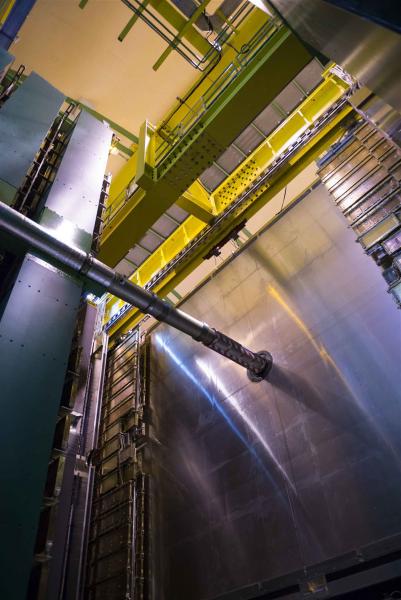The Large Hadron Collider beauty (LHCb) collaboration today announced results that confirm the existence of exotic hadrons – a type of matter that cannot be classified within the traditional quark model.
Hadrons are subatomic particles that can take part in the strong interaction – the force that binds protons inside the nuclei of atoms. Physicists have theorized since the 1960s, and ample experimental evidence since has confirmed, that hadrons are made up of quarks and antiquarks that determine their properties. A subset of hadrons, called mesons, is formed from quark-antiquark pairs, while the rest – baryons – are made up of three quarks.
But since it was first proposed physicists have found several particles that do not fit into this model of hadron structure. Now the LHCb collaboration has published an unambiguous observation of an exotic particle – the Z(4430) – that does not fit the quark model.

The Belle Collaboration reported the first evidence for the Z(4430) in 2008. They found a tantalizing peak in the mass distribution of particles that result from the decays of B mesons. Belle later confirmed the existence of the Z(4430) with a significance of 5.2 sigma on the scale that particle physicists use to describe the certainty of a result.
LHCb reports a more detailed measurement of the Z(4430) that confirms that it is unambiguously a particle, and a long-sought exotic hadron at that. They analysed more than 25,000 decays of B mesons selected from data from 180 trillion (180 ×1012) proton-proton collisions in the Large Hadron Collider.
"The significance of the Z (4430) signal is overwhelming – at least 13.9 sigma – confirming the existence of this state," says LHCb spokesperson Pierluigi Campana. "The LHCb analysis establishes the resonant nature of the observed structure, proving that this is really a particle, and not some special feature of the data."
Read more:
"Unambiguous observation of an exotic particle which cannot be classified within the traditional quark model" – LHCb public page
"Major harvest of four-leaf clover" – Quantum Diaries blog by Pauline Gagnon
